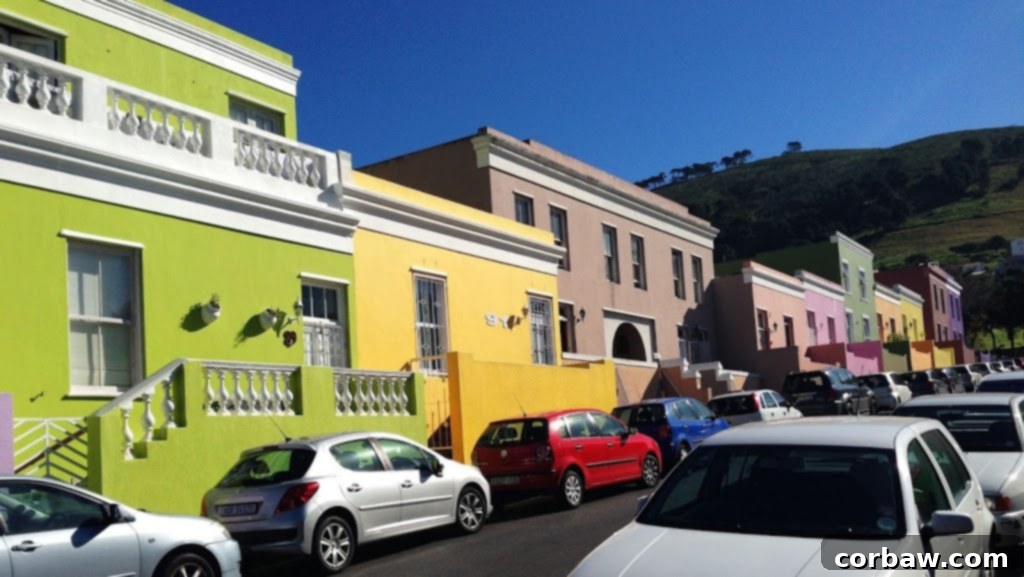Bo-Kaap: Unveiling Cape Town’s Vibrant Heart, Rich History, and Aromatic Spices
From the moment my fiancé and I began discussing a potential move to Cape Town, one destination consistently captured my imagination during my initial online searches: Bo-Kaap. Its vibrant imagery and unique story immediately stood out, playing a significant role in winning me over to the idea of a new life in this incredible city. It wasn’t just another pretty neighborhood; it promised an immersion into a unique cultural tapestry.
Known affectionately as the Cape Malay Quarter, Bo-Kaap holds a profound historical significance. It is the ancestral home of the Cape Malay people, descendants of slaves brought to South Africa from various parts of Southeast Asia by the Dutch during the 16th and 17th centuries. Despite its origins as a settlement primarily built to house low-income families, particularly freed slaves and artisans, properties in this distinctive area are now highly coveted. The neighborhood’s undeniable charm, characterized by its brightly colored houses and stunning historical architecture, draws visitors and residents alike, making it a truly iconic landmark of Cape Town.

A Glimpse into History: The Roots of the Cape Malay Community
To truly appreciate Bo-Kaap, one must delve into the compelling history of its inhabitants. The Cape Malay community, a term often used to describe this diverse group, traces its lineage to various regions including present-day Indonesia, Malaysia, India, Sri Lanka, and Madagascar. These individuals were forcibly brought to the Cape Colony as slaves, political exiles, or indentured laborers by the Dutch East India Company (VOC). Despite the immense hardships and cultural suppression they faced, they remarkably preserved and blended their rich traditions, languages, and, significantly, their Islamic faith.
The establishment of the Bo-Kaap area, originally known as Waalendorp or the Malay Quarter, began in the mid-18th century. Many of its early residents were skilled artisans, tailors, and builders, contributing significantly to the developing Cape Town. Over generations, they forged a distinct identity, marked by resilience and a profound sense of community. Their contributions to South African culture are immense, particularly in cuisine, music (known as Nagtroepe or “Night Troops” during New Year’s celebrations), and the unique architectural style found throughout the quarter. This deep-rooted history provides a powerful narrative to the picturesque streets we see today.
The Iconic Rainbow Houses: A Symbol of Freedom and Identity
While the history is captivating, it’s undoubtedly the vibrant, almost whimsical, houses that first capture the eye and imagination of anyone visiting Bo-Kaap. These brilliantly painted homes—in shades of fuchsia, turquoise, lime green, sapphire blue, and marigold yellow—are more than just a feast for the eyes; they tell a story of freedom and identity. Legend has it that when slavery was abolished in 1834, and subsequently when freed slaves were allowed to own property, they painted their houses in these bright colors as an exuberant expression of their newfound freedom and individuality. Prior to this, all houses in the area were typically painted white or grey, adhering to colonial dictates.
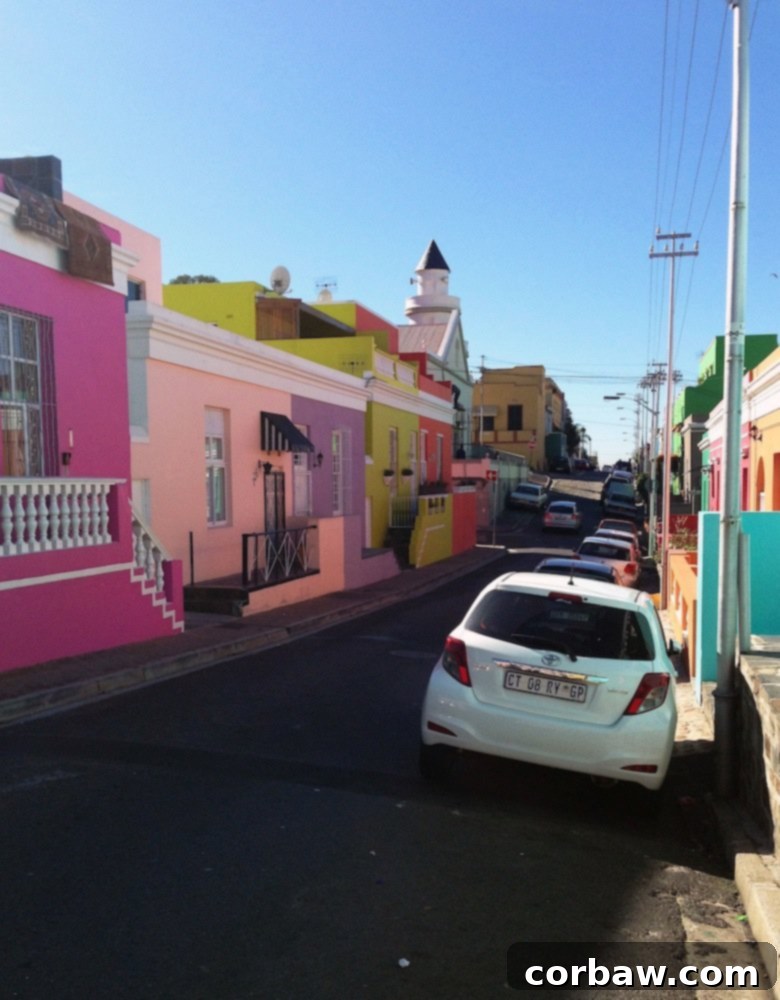
Architecturally, the houses in Bo-Kaap showcase a charming blend of Cape Dutch and Georgian styles, adapted to the local environment and the modest means of their original inhabitants. Characterized by flat roofs, ornate front doors, and cobblestone streets, they create an atmosphere that feels distinct and timeless. Walking through these streets isn’t just a visual experience; it’s an immersion into a living, breathing museum of cultural heritage. Each brightly colored facade seems to whisper tales of resilience, community spirit, and the enduring joy of a people who have carved out their own vibrant niche in the heart of Cape Town.
A Culinary Journey: Discovering Atlas Trading Company
Our visit to Bo-Kaap wasn’t solely for admiring the pretty houses, though they are undeniably captivating. My primary objective for this excursion was a pilgrimage to a legendary spice shop I had read about: Atlas Trading Company. As an avid home cook, I was on a mission to source authentic, high-quality spices, specifically for a Chicken Tikka Masala recipe I was meticulously developing and eager to perfect. The reputation of Atlas Trading Company as a treasure trove of exotic and local spices preceded it, promising an olfactory adventure unlike any other.
Stepping into Atlas Trading Company was an experience in itself. The shop, though modest in size, was an absolute wonderland, crammed floor to ceiling with an astonishing array of spices, herbs, and culinary delights. The air was thick with a heady, intoxicating aroma—a symphony of cumin, coriander, turmeric, cinnamon, and countless other fragrant notes. It was a sensory overload in the best possible way, immediately confirming that I had arrived at a true culinary institution. This wasn’t just a shop; it felt like a portal to the rich tapestry of Cape Malay cuisine, where spices are the very soul of every dish.
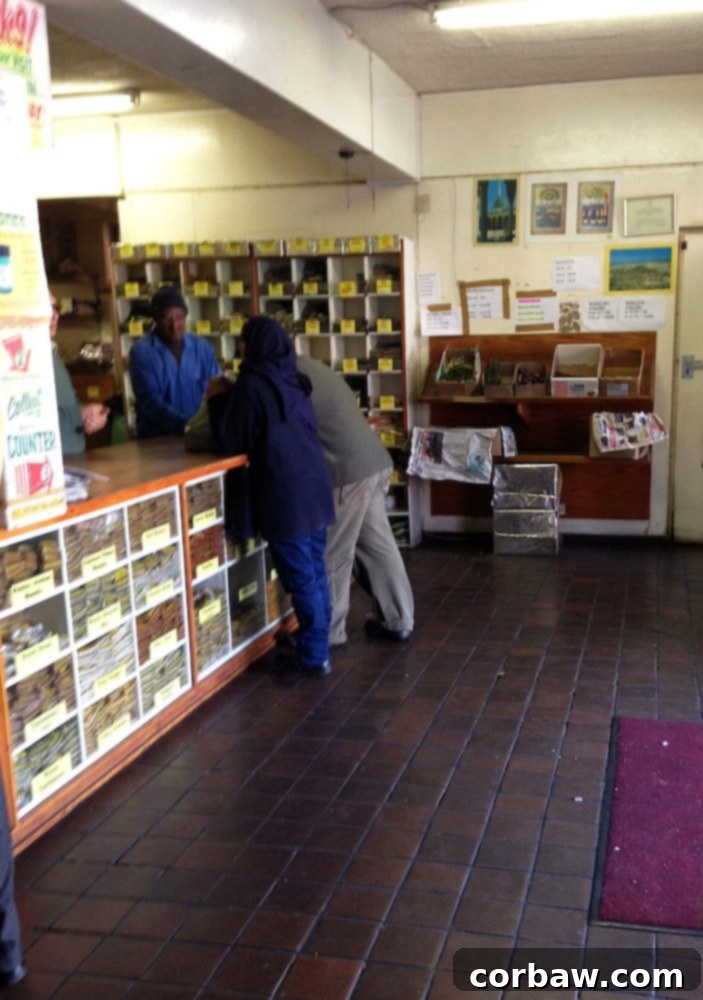
The shelves were neatly organized, displaying an impressive selection of pre-packaged spices and their unique, proprietary spice blends. From common kitchen staples to obscure, hard-to-find ingredients, it was all there, beautifully presented. The sheer variety was overwhelming, in the most delightful sense. Each package seemed to hold the promise of a delicious meal, a new flavor profile waiting to be discovered and incorporated into my cooking repertoire.
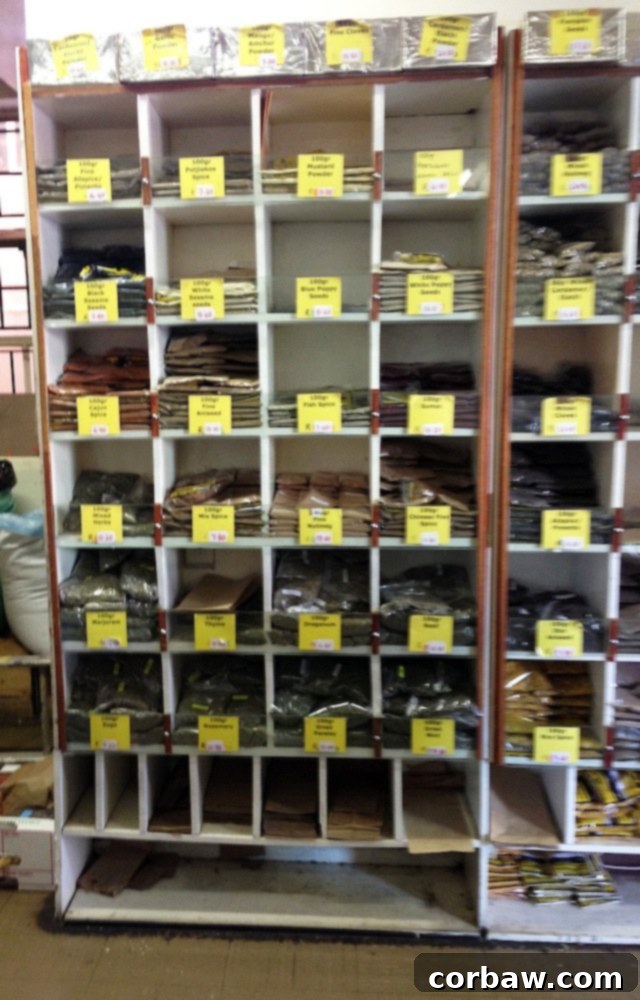
Beyond the pre-packaged options, the shop also featured enormous bins brimming with bulk spices. The sight was truly magnificent—mounds of vibrant powders and whole seeds, each emanating its distinct fragrance. I found myself instinctively drawn to the smoked paprika, mesmerized by its deep red hue and earthy aroma. My fiancé, however, had to gently remind me that a one-pound bag of smoked paprika, while tempting, might be slightly excessive for our home kitchen. His practical intervention was probably for the best, saving us from an overflowing spice cabinet!
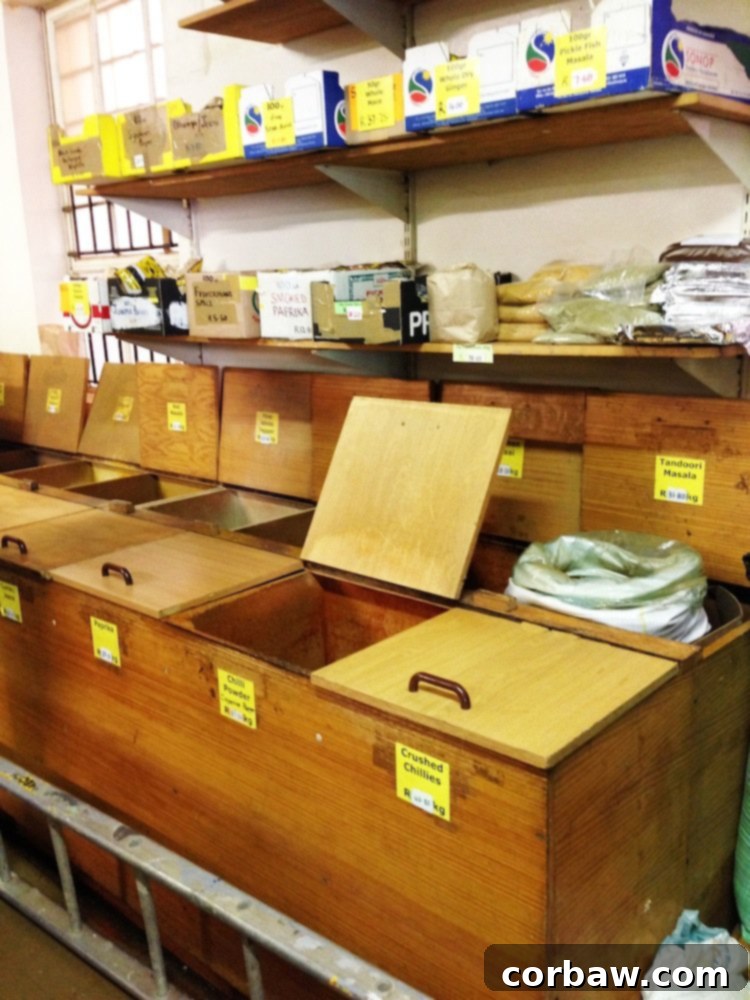
Navigating the Masala Maze: A Friendly Recommendation
With an abundance of “masala” varieties on offer, I knew I needed some expert guidance to make the right choice for my Chicken Tikka Masala. I noticed intriguing names like “Mother-in-law Masala” and “Father-in-law Masala” and, intrigued by the implications, asked one of the friendly staff members about the difference. With a charming smile and a knowing wink, the man responded, “Mother-in-law is much spicier.” This witty explanation, steeped in local humor, instantly made me want to grab both varieties. However, he then recommended their “Leaf Masala” as the most popular and versatile blend, an undisputed favorite among locals. Trusting his seasoned advice, I opted for the Leaf Masala, and I can confirm that it was indeed incredible, lending an authentic and profound depth of flavor to my recipe.
The experience at Atlas Trading Company was not just about purchasing spices; it was about connecting with a tradition, understanding the heart of Cape Malay cooking, and appreciating the value of local expertise. It’s a must-visit for any food enthusiast exploring Cape Town.
More Than Just Spices: Exploring Bo-Kaap’s Enduring Charms
Our brief but incredibly rewarding trip to Bo-Kaap left us eager for more. We savored every moment of wandering its colorful streets, absorbing the rich history, and experiencing the warm hospitality. We’re already making plans for our next visit, which will include a culinary adventure to Biesmiellah, a renowned restaurant celebrated for its authentic Cape Malay cuisine. We can’t wait to sample traditional dishes like bobotie, bredie, and a variety of curries, cooked with the very spices we discovered at Atlas Trading.
Another essential stop on our return will be the Bo-Kaap Museum. Housed in one of the oldest buildings in the area, the museum offers a fascinating insight into the social history of the Cape Malay community, showcasing their traditions, lifestyle, and contributions to South African culture. It provides a deeper context to the vibrant streets, allowing visitors to connect with the personal stories and struggles behind the iconic facade.
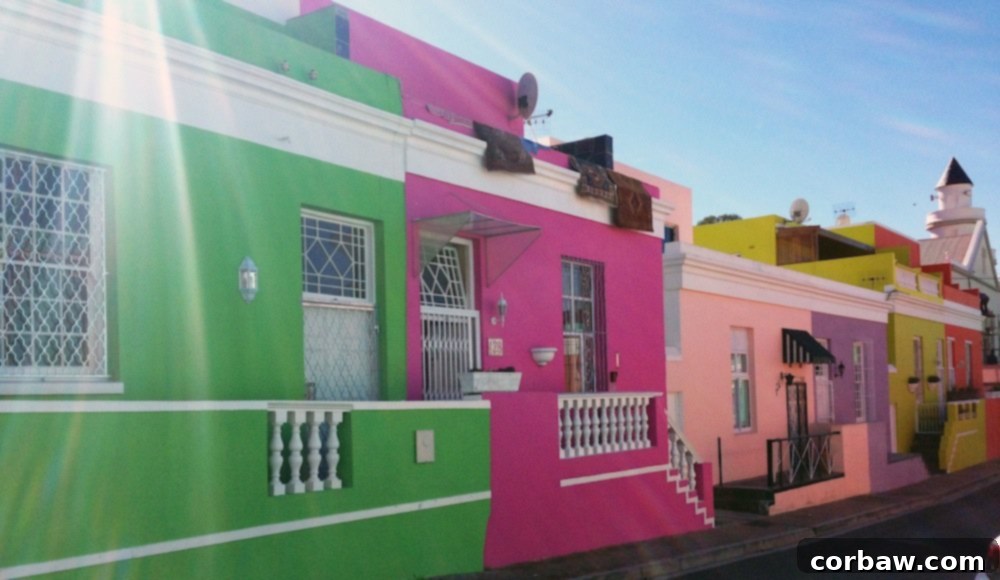
Planning Your Bo-Kaap Adventure
For anyone planning to visit Cape Town, Bo-Kaap should be high on your itinerary. It’s easily accessible and best explored on foot, allowing you to truly immerse yourself in its unique atmosphere. Consider joining a walking tour for an even richer understanding of its history and cultural nuances from a local guide. The best time to visit is typically during the cooler parts of the day, either in the morning or late afternoon, to avoid the midday heat and enjoy the soft light that makes the colors pop even more. Remember to wear comfortable shoes, bring your camera, and be prepared to be charmed by the locals. Don’t forget to respect the privacy of residents, as it is a residential area.
Bo-Kaap is more than just a collection of pretty houses; it’s a testament to cultural resilience, a vibrant community, and a culinary haven. It’s a place where history comes alive with every step, and the air is perpetually fragrant with the promise of delicious food and captivating stories. Our initial discovery of Bo-Kaap was just the beginning of a long and loving relationship with this extraordinary corner of Cape Town.
